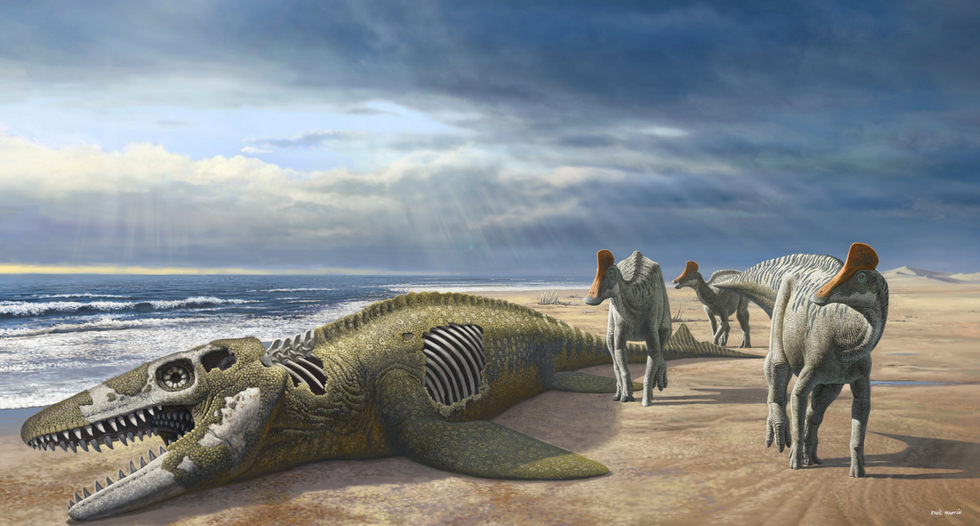Archaeologists find remarkable 240 million year old fossil of 16ft 'dragon'

The fossil of a Dinocephalosaurus orientalis dubbed a 'dragon' has been found in China
|PA

The creature has been dubbed a 'dragon' because of its long neck consisting of 32 separate vertebrae
Don't Miss
Most Read
Archaeologists have discovered a 240 million year of fossil of a 16ft “dragon” in China.
The long aquatic reptile, dubbed a “dragon” because of its lengthy neck, is called Dinocephalosaurus orientalis.
The species was first identified in 2003 but the new fossil has allowed scientists to see the complete anatomy of the “very strange animal”.
Dr Nick Fraser, part of the global research team, describes the beast as having flipper-like limbs and a neck longer than its body and tail combined.

The species was first identified in 2003
|PA
Its neck, which had 32 separate vertebrae, likely made the creatures excellent hunters, as well as making them adept for searching crevices underwater for food.
“This discovery just adds to the weirdness of the Triassic,” Dr Fraser, who published the paper in the journal Earth and Environmental Science: Transactions of the Royal Society of Edinburgh, told BBC News.
“And every time we look in these deposits, we find something new.”
“We are certain that it will capture imaginations across the globe due to its striking appearance, reminiscent of the long and snake-like mythical Chinese dragon,” he added.
LATEST DEVELOPMENTS:
The remains of the creature were discovered in Guizhou province, southern China, in ancient limestone deposits.
Comparisons have been made to the Tanystropheus hydroides, another marine reptile from the Middle Triassic period who also had a very long neck.
Whilst both creatures were of a similar size and had shared numerous features of their skulls, the Dinocephalosaurus had far more vertebrae, making it look like a snake.
Professor Li Chun, also part of the research team, said they “used newly discovered specimens housed at the Chinese Academy of Sciences to build on our existing knowledge of this animal”.
“Among all of the extraordinary finds we have made in the Triassic of Guizhou province, Dinocephalosaurus probably stands out as the most remarkable.”

Scientists discovered duck-billed dinosaur fossils in Morocco earlier this week
| Nick LongrichEarlier this week, palaeontologists discovered duck-billed dinosaur fossils in Morocco, which has revealed a “perplexing” discovery between Europe and Africa.
Scientists have theorised that the species swam hundreds of miles from one continent to another when Africa was an isolated island landmass and “surrounded on all sides by water” 66 million years ago.
Whilst some species may have been able to paddle in bodies of water, it has never been thought that they could swim for such long distances.
Yet fossils recently discovered in Morocco have unveiled a new species of duck-billed dinosaur, Minqaria bata, which measured three to four meters long and weighed about 250 kg, similar in size to a pony, according to researchers from the UK, Spain, France and Morocco.
Dr Nicholas Longrich, from the University of Bath and one of the report’s authors, said: “The anatomy of the new duckbill closely resembles that of European species, suggesting that the duckbills swam or floated across several hundred kilometres of open water to colonise North Africa.
“It’s extremely improbable that dinosaurs could cross water to get to Africa, but improbable isn’t the same as impossible. And given enough time, improbable things become probable.”










